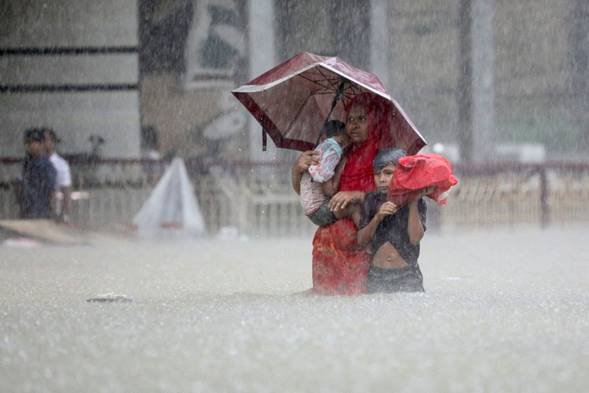Why Floods Are Getting Worse and How You Can Stay Safe
Imagine waking up to the sound of rushing water outside your window. Streets look like rivers, cars float away, and homes you saw yesterday stand half-submerged. For millions of people around the world, this isn’t a nightmare it’s reality.
Floods are among the most destructive forces of nature. They don’t just damage buildings; they shatter lives, displace families, and leave scars that last for years. But why do they happen? And more importantly why are they getting worse? Let’s break it down in simple, human terms.

🌧 When Rain and Snow Turn Deadly
Floods often begin with something ordinary rain or melting snow. But when there’s too much of it, too fast, the ground simply can’t soak it all up. Rivers and streams spill over, and suddenly entire neighborhoods are under water.
Think of it like a sponge: once it’s full, every extra drop just runs off. That’s what happens to the land when rainfall doesn’t stop.
🌍 Climate Change: The Invisible Hand Behind Bigger Floods
Here’s the hard truth climate change is making floods nastier.
Warmer air holds more water → heavier downpours.
Hotter temperatures → snow and ice melt faster.
Stronger storms → rivers and coasts can’t cope.
So when people say, “Floods feel worse than they used to,” they’re right. Our warming planet is stacking the odds against us.
🏙 Cities: Concrete Doesn’t Absorb Water
If you live in a city, you know what happens after a heavy rain. Roads turn into mini-streams within minutes. That’s because concrete and asphalt don’t absorb water the way soil or grass does.
Instead, rainwater rushes straight into drains drains that often can’t handle the load. That’s why a downpour that would be harmless in the countryside can cause chaos in urban areas.
🌳 Nature’s Armor: Why Losing Forests Hurts
Forests and wetlands act like giant sponges, soaking up water and releasing it slowly. But when we cut them down for farming or construction, we lose that natural shield.
Without trees and wetlands, floods move faster, hit harder, and cause far more damage. In short when we destroy nature, we destroy our own protection.
🏞 When Human Defenses Fail: Dams and Levees
We build dams and levees to keep water under control. But here’s the catch: if they break, the damage is often worse than the flood itself. Aging infrastructure and extreme weather are making these failures more common and more dangerous.
🌊 Coastal Communities and the Storm Surge Threat
If you live near the sea, flooding takes on a different shape. Storm surges when powerful winds push ocean water onto land are becoming fiercer with rising sea levels. For coastal families, one strong storm can change life forever.
⚡ Flash Floods: The Silent Killer
Flash floods are the scariest of all. They strike suddenly, sometimes within minutes of heavy rain.
One moment the ground is dry, the next a wall of water sweeps through streets and valleys. They’re powerful enough to carry away cars, houses, and even entire bridges.
That’s why experts say: “Turn Around, Don’t Drown.” Never risk walking or driving through floodwaters.
📜 What History Teaches Us
From the 1927 Mississippi Flood to Hurricane Katrina to the Thailand floods of 2011, history shows us the same lesson: ignoring flood risks is costly. Preparedness saves lives. Strong infrastructure, quick warnings, and resilient communities make all the difference.
🛡 How You Can Prepare
Floods can’t always be avoided, but preparation can save your life:
Build an emergency kit with food, water, first aid, and important documents.
Protect your home by elevating utilities, using flood-resistant materials, and checking your insurance.
Have an evacuation plan know your safe spots and practice with your family.
Preparation isn’t paranoia it’s peace of mind.
Final Thoughts
Floods remind us of nature’s power. But they also remind us of our responsibility to protect our environment, to prepare our communities, and to look out for one another.
We may not stop the rain, but we can choose how we respond. And that choice could be the difference between devastation and survival.
If you love this article you might like other content of our website. Feel free to explore more here 👇
